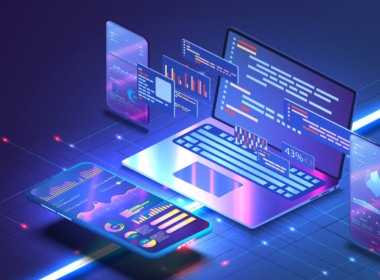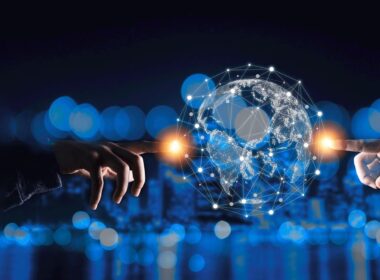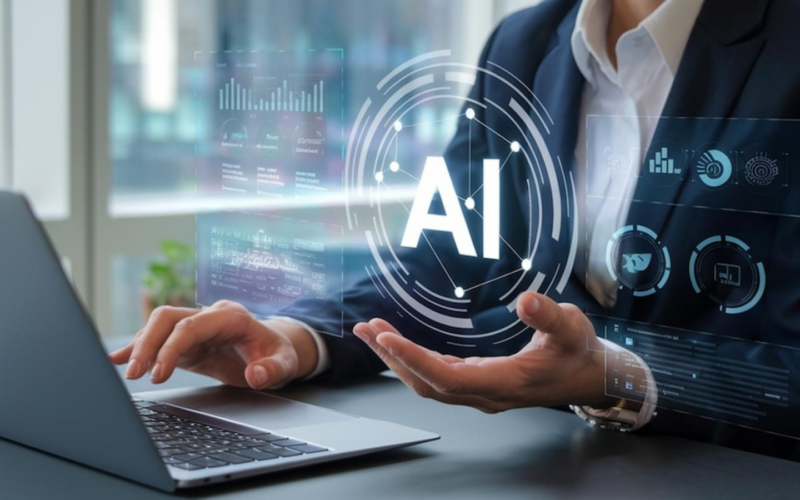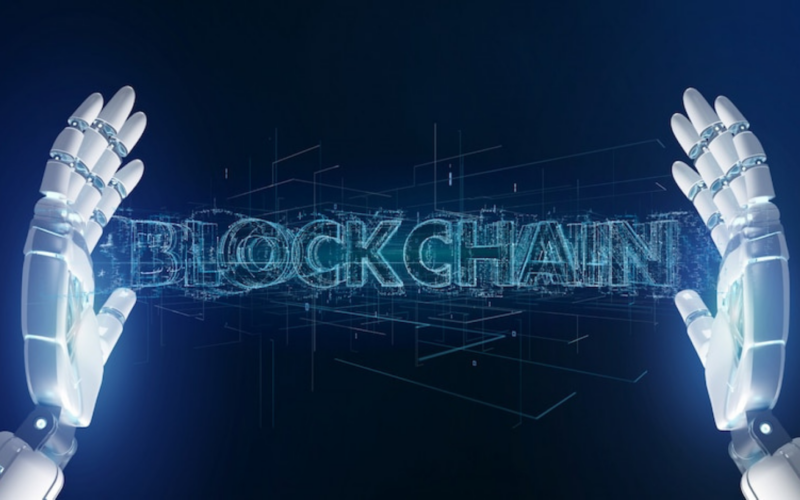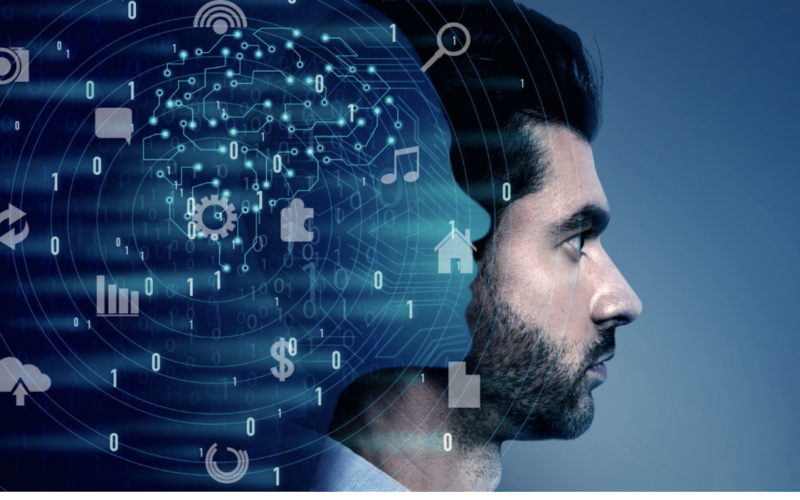As generative AI continues to advance, it is set to redefine the future of work in America. In an era where businesses are grappling with inefficiencies, rising operational costs, and the need for faster and more informed decision-making, AI is emerging as a powerful tool to drive change.
AI is no longer limited to simple data processing; it can now create, innovate, and even mimic human-like interactions, transforming how work is done across industries. So, what does this mean for AI and the future of work in the United States? Can AI truly transform how businesses operate, or will it disrupt the workforce as we know it?
By 2030, up to 30% of hours worked across the US economy could be automated due to the use of generative AI. This trend is already affecting industries such as healthcare, finance, and retail.
In this blog, we’ll explore Gen AI and the future of work in the US, making you aware of how AI will reshape the workplace, enhance productivity, and unlock new opportunities for innovation. You’ll also explore how to navigate these changes and embrace AI’s potential.
Key Takeaways
- Generative AI is expected to automate 30% of U.S. work hours by 2030, transforming industries such as healthcare, finance, and retail.
- Emerging technologies, such as quantum computing and explainable AI, will transform data analysis and ensure transparency in AI decision-making.
- Automation may impact lower-wage jobs, but it will also create new opportunities in green industries, healthcare, and construction.
- Collaborative efforts across government, industry, and academia are key for SMEs to thrive in an AI-enhanced future.
- SMEs must adopt AI-driven skills across their workforce and collaborative work processes to remain competitive and future-ready.
Understanding Generative AI
Generative AI is an advanced subset of artificial intelligence that enables machines to exhibit creativity and innovation. It can create new content, images, or solutions by learning from existing data. This unique ability positions generative AI as a transformative force across industries.
Also Read: Difference Between AI and Generative AI Explained
Key Technologies Behind Generative AI:
- Generative Adversarial Networks (GANs): GANs enable AI to create realistic and creative content by having two networks work against each other; one generates content, and the other evaluates it.
- Neural Networks: These systems enable AI to understand and process complex information, allowing it to devise new, innovative solutions.
Industry Applications:
- Pharmaceuticals: AI accelerates drug discovery by 50%, streamlining complex and time-consuming processes.
- Design & Content Creation: AI generates novel designs, assists in content creation, and helps artists and musicians with new ideas.
- Finance: AI optimizes risk assessment, fraud detection, and investment strategies, improving financial decision-making.
Benefits of Generative AI:
- Efficiency: Automates routine tasks, boosting productivity.
- Creativity: Frees up employees to focus on high-value, innovative work.
- Innovation: Enables businesses to create new solutions, driving continuous improvement.
Also Read: Understanding Generative AI and Its Impact on Business
As generative AI continues to reshape industries, its impact extends far beyond innovation and efficiency, influencing a wide range of sectors. It is also transforming the workforce. Let’s take a closer look at how AI will impact the future of work and life, and what that means for businesses like yours.
How will AI Affect the Future of Work?
The rise of generative AI is transforming the future of work in the United States, accelerating the automation of jobs across multiple industries. While automation isn’t new, the recent advancements in AI technology bring a new level of capability.
For business leaders, understanding this shift is critical for staying competitive, adapting their workforce, and capitalizing on new opportunities. Let’s explore how AI is changing employment patterns and the types of jobs most affected.
Automation and Job Displacement: A Historical Perspective
Technology has long disrupted industries, often leading to job displacement but also creating new roles. From the Industrial Revolution to the automation of the 20th century, advancements have historically led to both job losses and creations. For instance:
- Industrial Revolution: The rise of automated manufacturing led to the creation of factory jobs, while eliminating some agricultural and artisanal work.
- 20th Century: The introduction of automation in the automotive industry led to the emergence of new roles in technology and maintenance.
AI and the Future of Employment: Key Trends
Generative AI is poised to accelerate automation across various sectors. According to Goldman Sachs, 25-50% of workloads in some jobs could be automated. While some tasks will be replaced, human workers will still be needed to oversee and complement AI systems.
- Office and Administrative Support: 46% of tasks in these roles could be automated, including data entry and routine communications.
- Legal and Architectural Jobs: Approximately 44% of legal work and 37% of tasks in architecture and engineering could be automated.
Pro Tip: For SMEs, focusing on sectors where AI can enhance human creativity, such as strategy, design, and complex problem-solving, can provide a significant competitive edge.
The Creation of New Job Opportunities
AI is not just about job displacement. It also creates opportunities for new types of roles. These include:
- AI Development: Machine learning engineers, data scientists, and AI ethics experts are in high demand.
- Tech-Savvy Roles: As AI enhances industries like healthcare, finance, and logistics, new roles will emerge in tech management, AI maintenance, and innovation.
- Healthcare: With a shortage of workers, the healthcare industry is projected to require 3.5 million more jobs by 2030, driven by AI-powered innovations.
Also Read: Exploring Generative AI Use Cases in Healthcare System
Why It Matters to SMEs: For small businesses, embracing AI can open doors to new roles in tech and innovation, improving productivity and staying competitive.
Generative AI’s Role in Changing Work Dynamics
Generative AI’s impact extends beyond simple task automation. By automating repetitive tasks, AI can free up employees’ time to focus on higher-value work. Here are some key changes to existing workflows:
- Content Creation: AI tools can generate reports, marketing content such as blog posts, social media captions, email campaigns, and product descriptions. It can also code and debug errors, enabling teams to focus on creative and strategic tasks, such as high-level decision-making.
- Customer Service: AI-powered chatbots are already assisting businesses in providing 24/7 customer service, enabling faster response times and better customer satisfaction.
Also Read: Creating AI Chatbots for Customer Service in 2024
With this shift in the employment landscape, let’s explore how generative AI and automation are affecting specific industries, creating new opportunities and challenges across the board.
Industry-Specific Impact of Generative AI
Generative AI and automation are reshaping the workforce across various industries. Let’s break down how AI is impacting specific sectors and the emerging opportunities that arise from these transformations:
| Industry | Primary Impact | Emerging Opportunities |
| Financial Services | Automation of analysis and reporting | AI strategy development, client relationship management |
| Software Development | Automated code generation | AI integration architecture, complex system design |
| Media & Entertainment | Content generation automation | Creative direction, strategic content planning |
| Healthcare | AI-driven diagnostics and treatment plans | Personalized medicine, AI-assisted healthcare management |
| Retail | Automation in inventory management and customer service | AI-driven shopping experiences, supply chain optimization |
Furthermore, job growth in transportation services is expected to rise by 9% by 2030 as automation and AI-driven solutions transform logistics. On the other hand, despite a rise in overall U.S. manufacturing, demand for traditional production jobs is declining as skilled technical and digital roles become more essential.
Pro Tip: SMEs in these sectors should invest in upskilling their workforce to meet the growing demand for STEM talent and specialized healthcare workers.
Did You Know? Approximately 11.8 million workers in occupations with shrinking demand are expected to need to transition into different lines of work by 2030.
While understanding how AI is changing the future of work, some particular ethical and economic concerns require careful consideration. Let’s take a closer look at the challenges that come along.
The Ethical and Economic Concerns of Generative AI in the Workforce
As Generative AI continues to transform the American workforce, it presents significant challenges and ethical concerns that businesses, developers, and policymakers must address. From bias in algorithms to economic inequality, understanding the full impact of this technology is crucial for ensuring its responsible adoption.
Ethical Considerations in Generative AI
- Bias in AI Algorithms: One of the most pressing ethical concerns surrounding AI is the issue of bias in its algorithms.
Example: Research from the University of Calgary reveals that facial recognition systems show 99% accuracy for white male faces, but only 65% accuracy for Black women. This highlights the need for AI systems that are genuinely inclusive and unbiased.
Pro Tip: Businesses using generative AI should prioritize fairness and transparency. Regular testing and updates to AI algorithms can help mitigate bias and ensure equitable outcomes.
- Privacy Concerns: With the rise of AI-driven content creation, privacy concerns have become a significant issue. Generative AI often relies on vast datasets, raising questions about the ethical use of personal data. Balancing innovation with privacy requires clear guidelines and regulations to prevent misuse.
Why It Matters to SMEs: Small businesses that utilize AI for content creation must be cautious about data privacy and compliance with regulations, such as the California Consumer Privacy Act (CCPA), to avoid potential legal issues.
- Intellectual Property: The use of AI in content generation also brings up concerns about the ownership of the generated material. Establishing clear intellectual property laws and ethical standards will be key to managing this shift in creative industries.
Economic Implications of Generative AI
Generative AI carries profound economic implications, especially in terms of income inequality and job displacement. The introduction of automation in various sectors has disproportionately affected lower-income workers, leaving some of them without job security while simultaneously increasing the demand for high-skill roles in technology, healthcare, and other digital fields.
Let’s explore these in detail:
- Income Inequality: According to an MIT study, automation has been a significant contributor to rising income inequality, widening the gap between skilled and unskilled workers. For instance, self-checkout machines and automated manufacturing processes have disproportionately affected lower-income workers.
- Disproportionate Impact on Demographics: Women, particularly those in office support and customer service, are projected to experience significant job reductions. The same scenario is typical for Black and Hispanic workers, who are overrepresented in shrinking sectors like food services and customer support.
Why It Matters to SMEs: Creating inclusive hiring practices and offering training programs will be essential to ensure that the benefits of AI are distributed equitably across all demographics.
Struggling with one-size-fits-all AI solutions that don’t fit your needs?
Codewave’s custom AI/ML Development solutions are designed to tackle your unique challenges head-on. From eliminating bias in algorithms to enhancing workplace efficiency, we tailor AI to work for you.
Schedule a call now to discover how our personalized AI solutions can drive real results for your business.
As we address the ethical and economic challenges of Generative AI, it’s crucial to explore how U.S. regulations are evolving to manage these issues.
Government and Regulatory Response to Generative AI in the U.S.
As Generative AI continues to shape the workforce and society, it brings both tremendous opportunities and unique challenges. These transformations have prompted governments and regulatory bodies to focus on ensuring that AI is developed and deployed in a responsible and ethical manner.
In the United States, efforts to regulate AI are still in their early stages, requiring continuous updates to keep pace with technological advancements. Here are some current regulations related to Generative AI in the US.
- Federal Trade Commission (FTC): The FTC focuses on protecting consumers from deceptive or unfair AI practices. It has issued guidelines for transparency and accountability, urging businesses to be transparent about how they utilize AI, particularly in areas such as data collection and algorithmic decision-making.
- The Algorithmic Accountability Act: This bill aims to hold companies accountable for discriminatory outcomes resulting from the use of automated decision-making systems. It requires businesses to conduct impact assessments for AI systems, ensuring they are fair, transparent, and free from bias.
Why It Matters to SMEs: For small businesses adopting AI, staying compliant with these evolving regulations is crucial. Non-compliance could result in legal challenges, fines, and damage to brand reputation.
Note: Existing frameworks, like the FTC’s guidelines, are foundational but do not fully address the unique challenges posed by Generative AI. The U.S. needs a more comprehensive federal approach that tailors regulations to the evolving nature of AI, particularly in high-impact areas such as education, healthcare, and labor.
Furthermore, international collaboration is essential to developing a cohesive and effective AI governance framework. The Organisation for Economic Co-operation and Development (OECD) and Global Partnership on Artificial Intelligence (GPAI) are leading efforts to set global AI standards. The General Data Protection Regulation (GDPR), although specific to the EU, sets an international standard for data privacy and AI transparency, offering valuable lessons for U.S. policymakers.
As regulations around Generative AI continue to evolve, it’s equally important to focus on the skills your team needs to remain competitive.
Key In-Demand AI Skills
As an SME, embracing AI expertise is essential for staying competitive in an AI-driven economy. AI skills are highly valued, with professionals earning up to 47% higher salaries for their proficiency in AI.
Below, you will find some of the primary in-demand skill sets.
High-Value AI Competencies
| Skill Category | Core Competencies | Career Impact |
| Technical Skills | AI model interaction, data analysis, prompt engineering | Job security, higher compensation |
| Strategic Skills | AI implementation, workflow optimization | Leadership roles, project management |
| Creative Skills | AI-assisted content creation, problem-solving | Increased creative output, specialized roles |
To ensure your business thrives, you need to adapt your workforce. For that, you need to create a strategic development plan. Let’s explore those strategies next.
Building a Future-Ready Workforce: Strategies For Adapting Your Workforce with AI
As SMEs, staying competitive means embracing innovative hiring strategies, ensuring clarity in the scope of work for both humans and AI, focusing on upskilling, and reskilling your workforce to ensure long-term success. Here’s how:
Optimal Collaboration Strategies
- Define roles: Clearly distinguish between human and AI tasks to ensure effective allocation of responsibilities.
- Integrate workflows: Seamlessly incorporate AI into daily operations.
- Continuous improvement: Develop feedback loops to refine AI-human collaboration.
- Human-centered outcomes: Maximize AI’s capabilities while utilizing human insight.
The table below highlights the complementary roles of humans and AI in key workplace functions.
| Factor | Human Role | AI Contribution |
| Strategic Planning | Vision setting, goal definition | Data analysis, trend spotting |
| Creative Process | Original ideation, emotional resonance | Content generation, variation testing |
| Decision Making | Contextual judgment, ethics | Data processing, pattern recognition |
Innovative Hiring and Retention Strategies
- Expand Hiring Criteria: Focus on candidates’ ability to learn and adapt, rather than just matching specific experience.
- Upskill and Reskill: Invest in targeted training programs to help employees develop AI and tech skills, ensuring your workforce remains competitive and future-ready.
Did You Know? Skills are becoming outdated at a rapid rate, with AI and automation altering job requirements in as little as 2-5 years.
Pro Tip: Shifting away from rigid experience requirements helps SMEs tap into a broader talent pool and address labor shortages.
Educational Initiatives for AI Skills
- Google TensorFlow: It offers comprehensive tutorials and hands-on projects to help teams master machine learning concepts and build AI models. It is ideal for employees looking to deepen their technical expertise in AI development.
- Coursera’s AI for Everyone: A non-technical course offering an introduction to AI concepts and their applications. This course is perfect for SME leaders, marketers, and non-technical staff.
- IBM SkillsBuild: Provides free resources for AI literacy, offering career coaching, certification programs, and AI-powered learning pathways. Focuses on upskilling individuals from diverse backgrounds to encourage the influx of inclusive talent in the tech sector.
- Microsoft AI for Accessibility: Tailors AI training for those addressing societal challenges. Provides grants, mentorship, and resources to enable individuals with disabilities.
Why It Matters to SMEs: Educational initiatives help you access AI talent and provide growth opportunities for your current workforce.
Also Read: State of AI Adoption in U.S. Businesses
Ready to unlock the power of AI but don’t know where to start? You’re not alone. Many businesses struggle with integrating AI seamlessly into their operations.
At Codewave, we offer quick AI Audit services to help you realize the benefits of AI for your business. We also help you select the right AI solution that fits your unique needs.
Book a call now and let’s turn AI into your competitive advantage!
As you adapt your workforce with AI, it’s also essential to consider the broader shifts on the horizon. Let’s explore what lies ahead.
What Lies Ahead: Navigating the Future of Work with AI
Emerging technologies, including quantum computing and explainable AI, are poised to shape the future workforce significantly. Quantum computing will reform data analysis, offering immense power for solving complex problems. Meanwhile, explainable AI will ensure transparency in decision-making processes, building trust and supporting smooth collaboration between humans and AI systems.
By 2030, Generative AI is expected to enhance roles across STEM, creative industries, business, and law, improving productivity and efficiency while potentially eliminating specific jobs.
While automation may impact lower-wage sectors, it will create job opportunities in green industries, healthcare, and construction as the demand for skilled workers in these areas rises. For SMEs to thrive in this rapidly changing environment, collaborative efforts between government, industry, and academia are crucial.
As you prepare for the future of work with generative AI, partnering with the right experts is key. Here’s why.
Why is Codewave the Right Partner for Generative AI Development?
To stay competitive in an AI-driven economy, Generative AI (GenAI) is essential. Codewave’s GenAI Development Services are designed to streamline workflows, enhance customer engagement, and automate complex tasks, making your business more efficient and agile.
Here’s how our services can help you unlock the full potential of AI for your business.
- Streamlined Workflows with GenAI: We integrate GenAI into processes that need automation and simplification. For example, automating report generation to save time and resources.
- Custom GenAI Tools: We develop tailored GenAI tools that automate workflows and predict future trends using AI models to address specific business challenges.
- Conversational UX with AI Bots: Our bots enhance customer interactions by personalizing conversations to create a more engaging experience. These bots continually learn and improve, providing more accurate responses and enhanced service over time.
- Predictive AI for Smarter Decisions: Our predictive analytics tools analyze data, connect the dots, and forecast trends, enabling your business to make informed, proactive decisions.
- Accuracy in Every AI Model: Precision optimization is a key component of our process. We ensure highly accurate models that continually improve, ensuring your AI systems deliver reliable and consistent results.
- Agility for Dynamic Needs: We design AI solutions that are flexible and adaptable to your business’s needs, ensuring that you have the freedom to pivot quickly in response to market shifts or new opportunities without performance issues.
- Rapid Deployment: We deliver secure and fast releases, enabling you to deploy your AI solutions without delay and start seeing results quickly.
Struggling with slow processes, limited innovation, or scaling challenges? Our Generative AI development solutions can help you automate tasks, enhance creativity, and drive more informed decision-making, enabling you to stay agile and competitive.
Go through our portfolio to learn more about our work impact.
Schedule a call with one of our consultants to learn how our GenAI development services can address your unique challenges.
FAQs
Question 1: What is the difference between generative AI and AI?
Traditional AI analyzes existing data to make predictions or decisions, whereas generative AI helps you create new content, such as text, images, or code, by learning patterns from the data. For example, tools like ChatGPT and DALL·E generate human-like text and pictures.
Question 2: How can generative AI be used in cybersecurity?
Generative AI enhances cybersecurity by creating synthetic data for training, automating threat detection, and generating incident response protocols. It can simulate attacks to identify vulnerabilities, improving overall security posture.
Question 3: Does Generative AI negatively impact the American workforce?
Generative AI may displace specific jobs, especially in administrative and data-heavy roles. However, it also creates opportunities in IT, software development, and creative sectors. A McKinsey report estimates a potential 0.5–0.9% annual increase in U.S. labor productivity through 2030.
Question 4: In what ways do you think generative AI will shape the future of the US economy?
Generative AI is projected to contribute up to $4.4 trillion annually to the global economy by enhancing productivity in sectors such as customer service, marketing, and R&D. In the U.S., it is expected to add $3.8 trillion by 2038, driving significant economic growth.
Question 5: Do you agree with 59% of Americans saying AI will lead to fewer jobs for journalists over the next two decades?
Yes, the concern is valid. A Pew Research Center survey found that 59% of Americans believe AI will lead to a reduction in journalism jobs over the next 20 years. This reflects fears of automation in newsrooms and potential declines in journalistic quality.
Codewave is a UX first design thinking & digital transformation services company, designing & engineering innovative mobile apps, cloud, & edge solutions.
